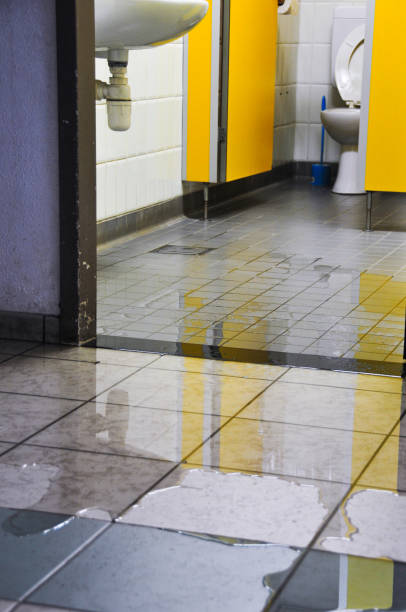Are you looking for information about How to Repair and Prevent Bathroom Water Damage??

Water damage typically occurs in the restroom because of the water used daily. Sometimes, the damages could be a little mold and mildew from the shower. Various other times, it's large damages on your floor. Whatever it is, it is always good to recognize the reason and also avoid it before it happens.
This overview will certainly undergo a few of the common causes of water damage in the bathroom. We will certainly likewise examine what you can do to prevent these causes from harming your shower room. Let's dive in.
These are the common factors you would certainly have water damage in your shower rooms and just how you can identify them:
Excess Wetness
It's awesome to have that long shower and also sprinkle water while you dance around and imitate you're doing, but occasionally these acts can trigger water damage to your washroom.
Sprinkling water around can cause water to head to corners and also develop molds. See exactly how you spread out excess wetness around, and when you do it, clean it up to avoid damage.
Splits in your wall floor tiles
Restroom wall surface ceramic tiles have been specifically designed for that objective. They safeguard the wall surface from moisture from individuals taking showers. However, they are not indestructible.
Sometimes, your washroom wall floor tiles crack and also allow some wetness to seep right into the wall surface. This might possibly destroy the wall surface if you don't take any type of action. If you discover a split on your wall ceramic tiles, fix it right away. Do not wait up until it damages your wall.
Overruning commodes and sinks
As human beings, sometimes we make errors that can cause some water damage in the shower room. As an example, leaving your sink tap on might create overflowing as well as damages to other parts of the shower room with dampness.
Also, a malfunctioning commode could trigger overruning. For example, a damaged commode handle or other parts of the tank. When this takes place, it could damage the flooring.
As quickly as you notice an overflowing sink or bathroom, call a plumbing professional to help take care of it quickly.
Burst or Leaking Pipes
There are lots of pipelines carrying water to different parts of your restroom. Some pipelines take water to the commode, the sink, the faucets, the shower, and numerous other locations. They crisscross the tiny location of the bathroom.
Every so often, these pipelines can obtain corroded and burst. Other times, human action might trigger them to leakage. When this takes place, you'll locate water in the edges of your bathroom or on the wall.
To spot this, look out for gurgling wall surfaces, mold and mildews, or mold. Call a specialist emergency situation plumber to fix this when it happens.
Roof Leaks
Sometimes, the problem of water damage to the bathroom might not come from the restroom. For example, a roofing system leak could cause damage to the bathroom ceiling. You can spot the damage done by looking at the water stains on the ceiling.
If you locate water discolorations on your ceiling, examine the roof covering to see if it's harmed. After that, call an expert to assist resolve the issue.
Conclusion
Water damage to your bathroom can be annoying. However, you can manage it if you protect against several of the reasons pointed out in this guide. Call a professional emergency plumbing professional if you see any kind of serious damage.
How to Prevent Water Damage in Your Bathroom?
Water damage repair is an expensive, meticulous, and lengthy process. Unfortunately, bathrooms are the most susceptible rooms to water damage due to toilets, showers, and sinks. Pipes and fixtures wear out over time and are not immune to damage. But all is not lost, as there are ways to prevent water damage from occurring in your bathroom.
Check Your Plumbing
Nothing lasts forever, especially pipes, which can rust and begin leaking over time. You should periodically conduct pipe inspections and pay attention for any musty smells or water stains that may indicate you need water damage repair. Here are some things to check:
Frequently test valves for your toilet, shower, and sink to ensure they are properly working. Check faucet supply lines hidden under vanities and replace when needed. Replace cracked or deteriorating caulking along sinks, tubs, and showers. If you notice a clog in your sink, call in a professional. Since you can’t check the pipes in the wall, keep an eye out for stains, drywall bubbling, musty smells, and excess moisture; if the bathroom is on a second level, check the ceiling of the room directly below for these signs. Don’t Overwork Your Toilet
One of the most common reasons bathrooms need water damage repair is due to overflowing toilets. Save yourself the hassle of cleanup by being mindful and not pushing your toilet to extreme limits. If you have young children, it is especially important to keep an eye on them when they are in the bathroom and to teach them how to avoid clogging the toilet. Here are some more tips to help prevent your toilet from overflowing:
If you have a septic tank, only use septic-safe toilet paper Do not flush anything down the toilet besides toilet paper; items like diapers and sanitary napkins will clog the piping Pay attention to your toilet’s water level: If it’s low, it could mean it is partially clogged or that there is a crack in the toilet bowl https://www.alure.com/home-improvements-blog/resources/how-to-prevent-water-damage-in-your-bathroom

As an avid person who reads on How to Repair and Prevent Bathroom Water Damage?, I thought sharing that editorial was important. Those who enjoyed our blog posting plz be sure to share it. I take joy in reading our article about How to Repair and Prevent Bathroom Water Damage?.
Further Details